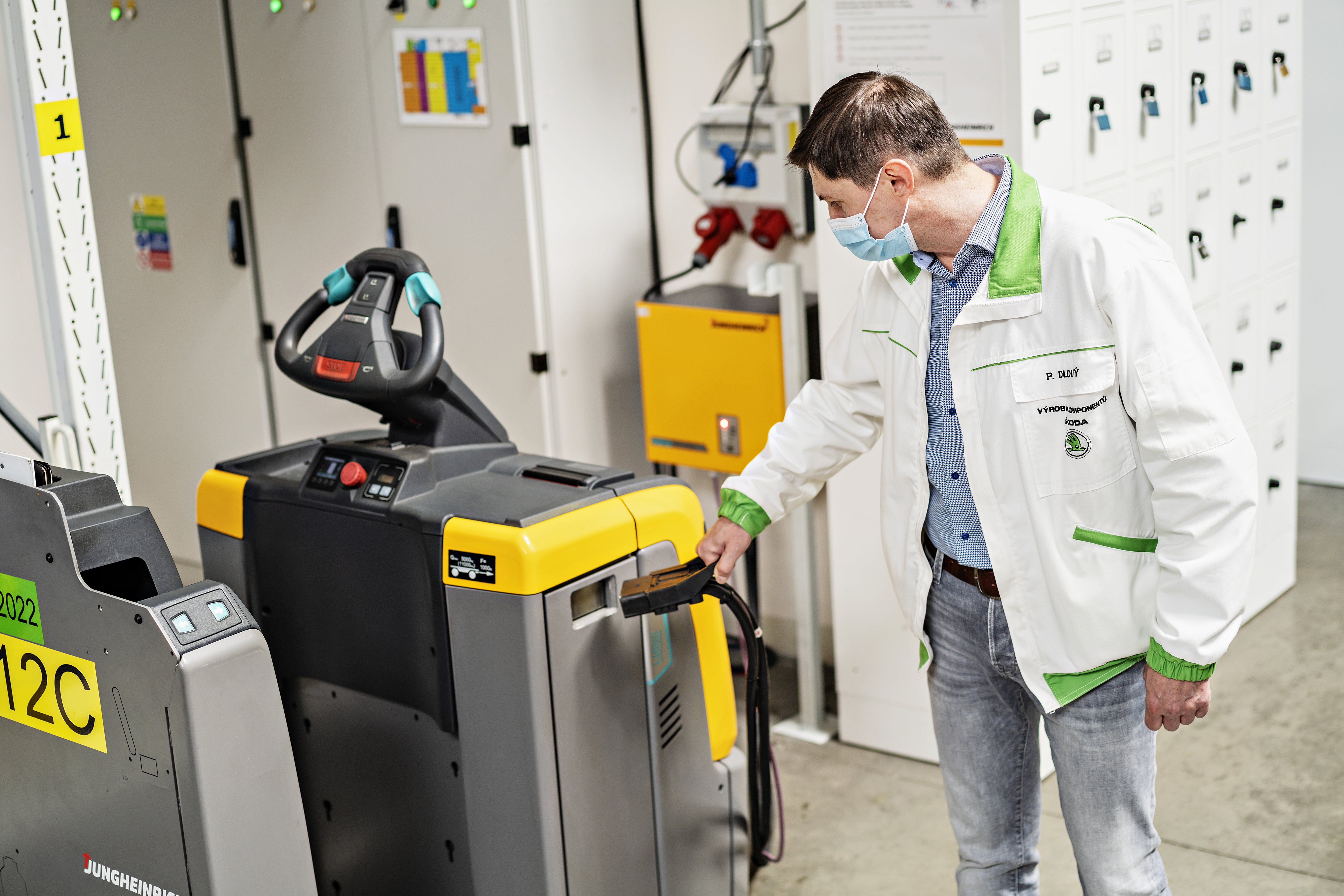40,000 trees and birdhouses
Vrchlabí has not yet managed to eliminate all CO2 emissions – that’s a very challenging goal. We decided to address the remaining emissions by buying offset credits. “For 2020, we thus offset combustion of natural gas, which is no longer necessary this year because the Vrchlabí plant has switched to bio-methane. In 2021 we will therefore have to work on eliminating emissions from coolants and company cars. But this is already just a fraction of the total volume, so I believe that we will successfully push ahead by taking incremental steps,” says Grmela.
 Pumping cutting oil from the bottom of the tanks of the central filtration station reduces the generation of hazardous waste.
Pumping cutting oil from the bottom of the tanks of the central filtration station reduces the generation of hazardous waste.
Part of the offsetting in Vrchlabí was done by purchasing credits from two wind farm projects in Taiwan and India. “In addition, our factory cooperates closely with the Krkonoše National Park. Last year we planted 40,000 trees in the vicinity of the plant, and we also cooperate with the park on other biodiversity projects, such as installing birdhouses,” says Jiří Svatý, technical service coordinator at the Vrchlabí plant.
“These activities are not reflected in the CO2 balance because they are not certified, but they show that taking care of our surroundings is important for us,” concludes Grmela, the project coordinator, adding that it is a realistic goal for all ŠKODA plants to be CO2 neutral by 2030.
 The batteries in the handling machines were replaced with lithium batteries, which saved energy and reduced CO2 emissions.
The batteries in the handling machines were replaced with lithium batteries, which saved energy and reduced CO2 emissions.
“One big issue is the switch from burning natural gas to bio-methane. This will make everything that runs on gas, such as the co-generation units at Vrchlabí and Kvasiny, CO2 neutral. The plan for Mladá Boleslav then involves switching to exclusive combustion of biomass. This should happen around the end of 2025. Today, biomass is burned at Mladá Boleslav along with brown coal. If we manage to complete this change, it will be a major step towards CO2 neutrality in terms of energy generation for the entire company,” says Pavel Grmela, explaining the challenge that lies ahead.






































